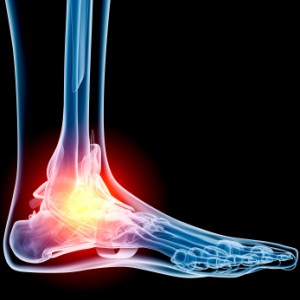Title: Functional Rehabilitation Interventions for Chronic Ankle Instability: A Systematic Review
Authors: Kathryn A. Webster and Phillip A. Gribble
Reference: Journal of Sport Rehabilitation, 2010, 19, 98-114
Study Type: Systematic Review
Aims: The authors aim to answer 2 clinical questions with the results of their review. These are:
(1) Does functional rehabilitation improve dynamic postural control in those with chronic ankle instability (CAI)?
(2) Does functional rehabilitation improve self-reported outcomes in those with CAI?
Methods: The authors searched the databases of Medline, SPORTDiscus, and PubMed using a combination of the following keywords: ankle, ankle instability, recurrent sprains, functional, rehabilitation, wobble board, ankle disk, agility, proprioception, and plyometric.
Methodological quality of the studies to be included was assessed using PEDro scores. The final 6 articles included in the review had PEDro scores between 1 and 6, with an average of 4. This would indicate that the included studies are of lower methodological quality.
Studies included assessed the use of functional rehabilitation interventions. The exercises were often dynamic, closed-chain rehabilitation exercises including retraining using a wobble board or ankle disc or landing/running drills. Some generic examples are shown in the Video section of this site.
Results: The included articles showed frequently unclear results:
1. Does functional rehabilitation improve dynamic postural control in those with CAI?
The articles used a variety of assessment tools for assessing dynamic postural control (including Star Excursion Balance Test, Biodex Stability System, or time to stabilization), and they showed inconsistent results. Some of the included studies showed large effect sizes, however they had 95% CI’s that would cross 0. Some others showed smaller effect sizes, with 95% CI’s that did not cross 0. This makes a clear conclusion on this clinical question difficult.
2. Does functional rehabilitation improve self-reported outcomes in those with CAI?
A more definitive answer can be drawn to answer this clinical question. The multiple assessment tools for self-reported function that were implemented in the studies reviewed all demonstrated improvements in ankle stability. Despite 1 study whose confidence interval crossed 0, all other findings suggest that functional rehabilitation does, in fact, improve self-reported outcomes for those with CAI. This included reducing rates of re-injury.
Conclusions: The authors conclude that sports physiotherapists can implement dynamic, closed-chain rehabilitation exercises for 4 to 6 weeks, 3 or 4 times a week with confidence, knowing that patients who have completed these protocols have significant improvements in self-reported function.
However, it is important to remember the low methodological quality of the included trials before implementing such a protocol. This systematic review clearly highlights the need for more quality research to guide the sports physiotherapist’s evidence based decision making when rehabilitating the athlete with chronic ankle instability.
Clinical Relevance/Implications: This research may indicate that patients or athletes with chronic ankle instability would respond favourably to functional rehabilitation interventions – most notably wobble board, ankle disc and jumping/landing/running drills. The athletes are most likely to improve in domains of self-report outcomes including reduced risks of re-injury.
As previously stated, you can watch some video examples of functional rehabilitation exercises in the Video section of this site.
Please feel free to comment on this summary and tell us what your thoughts are on this research?
Related Posts










